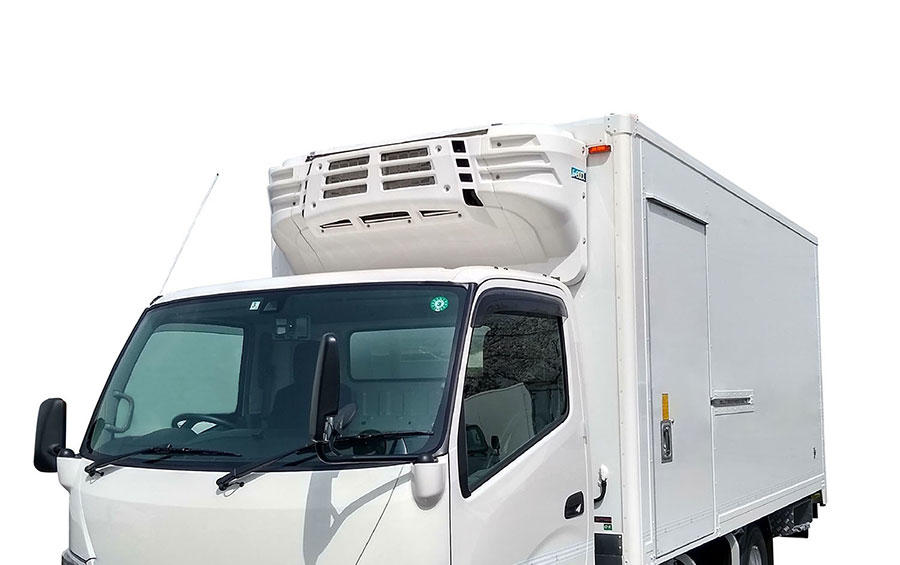How Cooled Trucks Operate to Guarantee Safe and Reliable Distribution of Perishable Item
Refrigerated vehicles play a vital function in the supply chain, making sure that disposable goods are moved safely and effectively. Making use of advanced refrigeration modern technologies and durable insulation, these lorries maintain precise temperature level control, which is crucial for preserving the quality of delicate items.
Overview of Refrigerated Trucks
Cooled vehicles, frequently described as reefer trucks, play a critical role in the transport of subject to spoiling products throughout numerous industries. These specialized lorries are made to maintain certain temperature level ranges, ensuring that items such as fresh fruit and vegetables, dairy products, meat, and drugs stay risk-free for usage and effective usage. The procedure of cooled trucks is essential in reducing putridity and expanding the service life of temperature-sensitive products.
Reefer trucks are furnished with shielded cargo locations that are capable of maintaining low temperature levels, which can be adjusted according to the kind of goods being transferred. The vehicles typically make use of a refrigeration unit powered either by the lorry's engine or an independent source of power, allowing for constant temperature level control during transportation.
Along with temperature upkeep, these vehicles are often developed with sophisticated monitoring systems to track the inner setting, making sure compliance with wellness and safety laws. Chilled trucks contribute considerably to the supply chain, allowing timely shipments to restaurants, merchants, and consumers. Their critical role emphasizes the significance of reliable transport solutions in today's worldwide market, where quality is vital.
Secret Refrigeration Technologies
Keeping optimal temperature control in refrigerated vehicles counts on a number of crucial refrigeration modern technologies that boost performance and reliability. Among one of the most usual systems is the vapor-compression refrigeration cycle, which makes use of a cooling agent to absorb heat from the truck's interior, decreasing the temperature level. This procedure involves a compressor, condenser, development shutoff, and evaporator, operating in tandem to distribute the cooling agent and keep a regular climate.
One more remarkable technology is making use of eutectic plates, which save and launch thermal energy. These plates are loaded with a phase-change material that strengthens at a details temperature level, offering a stable cooling resource. This technique not only improves energy performance however additionally lowers the need for continuous power supply throughout transit.
Additionally, progressed insulation products, such as polyurethane foam, significantly improve the thermal efficiency of refrigerated trucks, reducing temperature level variations during dumping and filling. Some modern-day chilled trucks additionally incorporate telematics systems, permitting for real-time monitoring of temperature level and performance, therefore guaranteeing conformity with safety and security criteria. With each other, these innovations make sure the risk-free transportation of perishable goods while optimizing functional performance and lessening energy consumption.
Temperature Control Devices
Reliable temperature control systems are essential in ensuring the honesty of subject to spoiling items during transport. Refrigerated vehicles utilize sophisticated technologies to preserve constant temperature arrays, avoiding perishing and guaranteeing item safety and security - cold transport companies.
Additionally, contemporary cooled trucks are equipped with electronic thermometers and programmable temperature level tracking systems. These systems permit real-time monitoring of interior temperature levels, offering notifies if the temperature level deviates from the predetermined variety. This ability is important for conformity with health and wellness and security laws.
Insulation likewise plays an essential role in temperature control. High-quality insulation products reduce warm exchange, preserving the preferred interior problems. Furthermore, air movement administration within the cargo area is crafted to make certain consistent temperature distribution, protecting against hotspots that could compromise product honesty (refrigerated truck companies).
Finest Practices for Packing

First, it is vital to pre-cool the truck prior to filling. This practice permits the temperature control system to support, developing a perfect setting for perishable products. Next off, items must be loaded in a manner that promotes airflow. Avoid overloading and obstructing vents, as this can lead to temperature level variations and hotspots.
Shelving or using pallets can help in arranging products, guaranteeing that larger items are placed near the bottom to stop crushing lighter products. Furthermore, it is important to segregate various sorts of products, specifically those with differing temperature level requirements, to stop cross-contamination and putridity.
Finally, safeguarding the load with nets or bands will prevent motion throughout transit, therefore decreasing the threat of damages and maintaining the stability of temperature-sensitive items. By adhering to these ideal practices, drivers can make sure efficient and safe delivery of perishable products while making best use of the efficiency of their refrigerated trucks.
Obstacles and Solutions in Transport
One substantial problem is temperature Going Here fluctuations, which can occur due to equipment breakdown or improper filling techniques. In addition, roadway problems and delays can better intensify temperature level control problems, especially throughout extended transit times.
Advanced telemetry can provide real-time temperature level information, alerting vehicle drivers to any abnormalities. websites Training employees on finest loading and unloading techniques can reduce the risk of temperature level discrepancies.
One more key remedy includes path optimization. Utilizing general practitioners and web traffic monitoring innovations can help motorists select one of the most reliable paths, minimizing transportation times and minimizing direct exposure to adverse conditions. Collaborating with dependable logistics partners who prioritize chilly chain honesty is also essential for ensuring that products stay within needed temperature arrays.

Final Thought
Finally, refrigerated vehicles play a vital function in the secure and effective transportation of subject to spoiling products. Using sophisticated refrigeration innovations and efficient temperature level control devices ensures that items remain within required temperature ranges. Sticking to finest practices in loading and route optimization additionally enhances shipment performance. Resolving difficulties with ingenious remedies is vital for keeping compliance with health and wellness laws, eventually securing the honesty of sensitive products throughout the supply chain.
